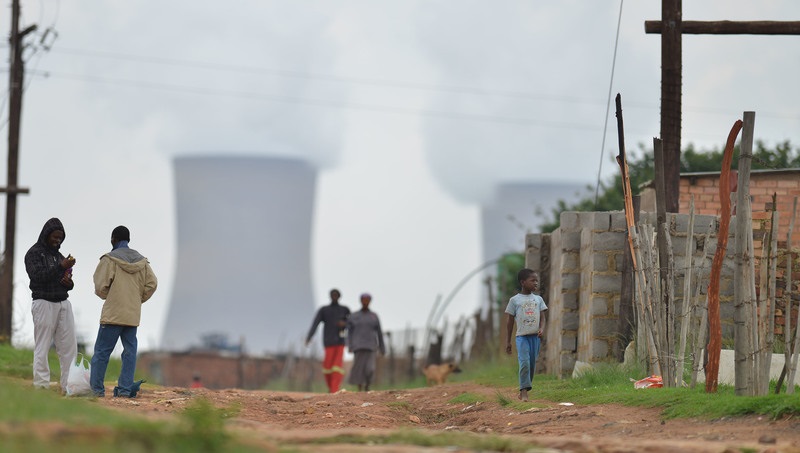The South African energy ministry has suggested that the country should scale back its climate ambitions, looking to use more gas and less renewables than previously planned.
The ministry, led by pro-coal minister Gwede Mantatashe, released its draft Integrated Resource Plan (IRP) on Thursday.
Energy analysts complained that it fails to reveal the figures on which its controversial assumptions are based and pointed out that it contrasts sharply with South Africa’s already approved just energy transition strategy.
Under the new IRP’s preferred scenario, the government will add 6 gigawatts (GW) of new gas by 2030 but just 4.5 GW of new wind and solar between 2024 and 2030.
Azerbaijan appoint state oil company veteran as Cop29 president
Together with private sector-led projects, this would lift the share of renewables in the power mix to 22% by the end of the decade.
That’s according to calculations by Tobias Bischof-Niemz, a former policy adviser at the state-owned energy research unit CSIR.
That is a step back from the 2019 iteration of the IRP, which saw renewables reaching at least 33% of the mix by 2030.
Moreover, in April local universities, research entities, business groups and the government’s official climate advisers found that South Africa needs to add 50-60GW of solar and wind this decade to end rolling blackouts and meet its climate commitments. Doing so would push the share of renewables above 40%.
Happy Khambule, environment and energy manager at Business Unity South Africa and former member of the government’s climate advisory body, told Climate Home that “the IRP deviates from widely accepted models and shows a lack of ambition”.
South Africa is Africa’s biggest greenhouse gas emitter thanks to its heavy reliance on coal, which supplies more than four-fifths of the nation’s electricity.
Yet regular power cuts have hobbled the economy since 2007 due to ongoing breakdowns across the country’s fleet of ageing coal plants.
At the Cop26 climate conference in Glasgow in 2021, a group of wealthy nations announced they would help fund South African investments in renewable energy, transmission infrastructure, green hydrogen, and electric vehicle manufacturing.
The South African government has since approved a just energy transition investment plan, which has $11.9 billion in financial commitments so far and which largely follows the climate commission’s recommendations.
But the new IRP, which says rolling blackouts will likely continue until at least 2028, shows that Mantashe’s department has different ideas.
Mantashe is a former coal miner who rose to power through the trade union movement. He has long called for new public investments in coal, gas and nuclear power, arguing that these technologies which can provide electricity when called upon are necessary for both energy security and economic development.
In 2022, Mantashe clashed publicly with the then head of the state-owned power company Eskom Andre De Ruyter, who favoured a more ambitious renewable energy programme.
Mantashe signed off on the draft IRP, a 48-page document which looks at a number of possible pathways to 2030 and then to 2050.
One pathway relies on delaying the closure of five coal plants by a decade and focusing on improving their performance, while another envisages the addition of up to 6GW of so-called “cleaner coal” technologies.
The IRP also considers investment in nuclear energy as well as a renewables-only pathway – although it claims that this option is not feasible.
“It is evident that energy pathways based on renewable and clean energy technologies only deliver the desired outcome insofar as decarbonising the power system,” the IRP reads. “However, these pathways do not provide security of supply while carrying the highest cost to implement.”
Indonesia promises to fine palm oil companies operating in forests
But Emily Tyler, the climate policy lead at Meridian Economics Emily Tyler dispute this conclusion. She told Climate Home: “All credible South African power system modelling exercises show substantial renewable energy capacity in the least-cost case…and little utilised gas, no nuclear, and no new coal”.
While it does not make any definitive conclusions, the IRP suggests that the best option would be to reduce the renewables programme and build up a gas industry.
According to this pathway, South Africa should procure 7 GW of gas capacity by 2030 and another 33.4 GW over the following two decades, increasingly using gas drilled locally.
Tyler said that, if this plan goes ahead, private industry would build its own cheap renewable energy while “the poor will be left with very expensive grid electricity as the only option”.
Tyler adds that the lack of technical detail in the draft IRP makes it “impossible to assess”.
Despite deadly air pollution in coal regions like Mpumalanga, the plan suggests the need to find a way around compliance with South Africa’s air quality standards to ensure coal plants can legally remain online.
Eskom is technically in breach of the nation’s minimum emission standards, but has been granted exemptions until March 2025. If the rules are implemented from that date, Eskom would have to remove up to 30GW of coal capacity from the mix.
“A balance will have to be found between energy security, the adverse health impacts of poor air quality, and the economic cost associated with these plants shutting down,” the IRP states.
The draft plan is out for public comment. Once approved, it will allow policymakers to procure new generating capacity in line with its recommendations.
